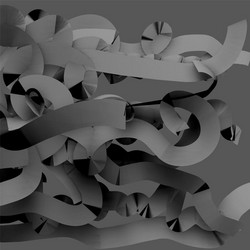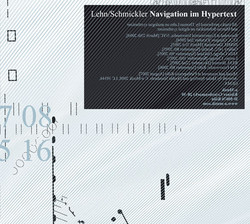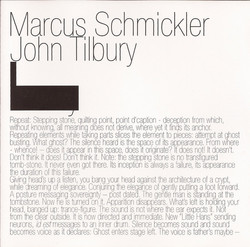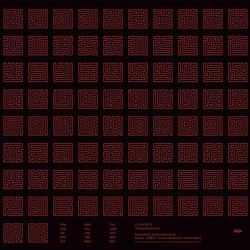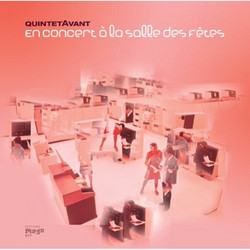1
Marcus Schmickler
Palace of marvels (queered pitch)
Edition of 500. Composed by Marcus Schmickler. Recorded and Mastered at Piethopraxis, Köln. January-August 2010. Cut at Dubplates & Mastering, Berlin, October 14th 2010. Artwork by Tim Berresheim. Marcus Schmickler's new release following his acclaimed 'Altars of Science' is a must have for those interested in the rising field of contemporary Computer Music. It reconfirms Schmickler's interest in the liaison of sound, phenomenology and cognitive sciences. Schmickler therefore utilizes a new interpretation of 1960's discovery, the Shepard-tone, discovered by Roger Shepard, which creates the auditory illusion of a tone that continually rises or descends in pitch yet ultimately seems to get no higher or lower. The phenomenon first got imposed to the music world by James Tenney in his piece For Ann Rising. Similarly, Schmickler has a musical take on the subject by creating Arpeggios, short sequences of tones creating an akin effect. Schmickler's interest in the field got fired by Ernst Gombrich's essays on Art and Illusion questioning the very foundations of our understanding of the history of the image and it's representation of our world. Adequately Schmickler's work ever since can be seen as a play within an anthropology of music. Here in terms of it's very fundamental parameters rhythm, sound and pitch, as well as music practice wit it's socio-economic implications. Beyond that, the title Palace of Marvels was found at French intellectual Jacques Attali, who, in his critically acclaimed book, Noise: The Political Economy of Music, cites one of Leibniz's little known but extraordinary texts, Drôle de pensée touchant nouvelle sorte de représentation, in which the philosopher describes the Palace of Marvels. The Palace of Marvels is Leibniz's idealization of a perfect political organization, which is built in such a way that the master of the house is able to hear and see everything that is being said and done in the premises without himself being perceived by his subjects. Leibniz's vision of disciplinary society not only predates Foucault's subsequent versions of surveillance mechanism, the Panopticon, but it also conceptualizes a more effective and absolute form of power through eavesdropping, censorship, and recording, as well as surveillance through visual means. Listening in on, ordering, transmitting, and recording noise are at the heart of the modern State. The idea for the material was originally conceived for a collaborative Installation-piece together with arts-collective Interpallazo. The technical application was realized with the kind assistance of Prof. Dr. Alberto de Campo.
Details
Cat. number: Emego 113V
Year: 2010


























